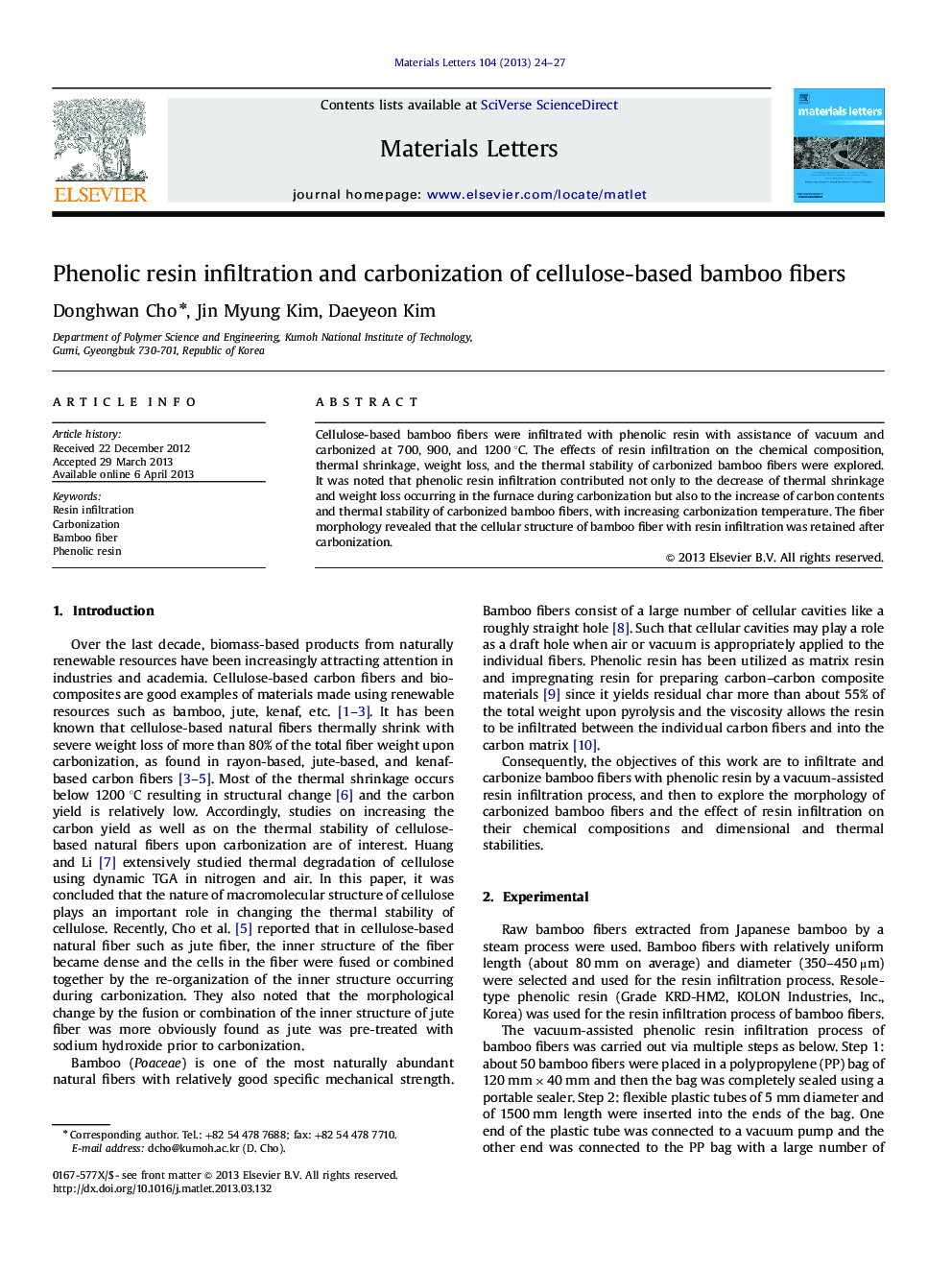| Article ID | Journal | Published Year | Pages | File Type |
|---|---|---|---|---|
| 1645187 | Materials Letters | 2013 | 4 Pages |
•Effect of vacuum-assisted phenolic resin infiltration on carbonized bamboo fiber properties.•Bamboo-based carbon fiber with decreased thermal shrinkage and weight loss upon carbonization.•Bamboo-based carbon fiber with increased carbon contents and thermal stability.•Retained cellular structure of bamboo fiber with resin infiltration after carbonization.
Cellulose-based bamboo fibers were infiltrated with phenolic resin with assistance of vacuum and carbonized at 700, 900, and 1200 °C. The effects of resin infiltration on the chemical composition, thermal shrinkage, weight loss, and the thermal stability of carbonized bamboo fibers were explored. It was noted that phenolic resin infiltration contributed not only to the decrease of thermal shrinkage and weight loss occurring in the furnace during carbonization but also to the increase of carbon contents and thermal stability of carbonized bamboo fibers, with increasing carbonization temperature. The fiber morphology revealed that the cellular structure of bamboo fiber with resin infiltration was retained after carbonization.
Graphical abstractCellulose-based bamboo fibers were infiltrated with resole-type phenolic resin with assistance of vacuum and then cured. The effect of resin infiltration on properties of bamboo fibers after carbonization was studied. Phenolic resin infiltration contributed not only to the decrease of thermal shrinkage and weight loss occurring during carbonization but also due to the increase of carbon contents and thermal stability of carbonized bamboo fibers, with increasing carbonization temperature. The fiber morphology revealed that the cellular structure of bamboo fiber with resin infiltration was retained after carbonization. Figure optionsDownload full-size imageDownload as PowerPoint slideCross-sections of bamboo fibers: (A) raw, (B) infiltrated with phenolic resin, and infiltrated, carbonized (C) at 900 °C and (D) at 1200 °C. The scale bar indicates 100 μm.
